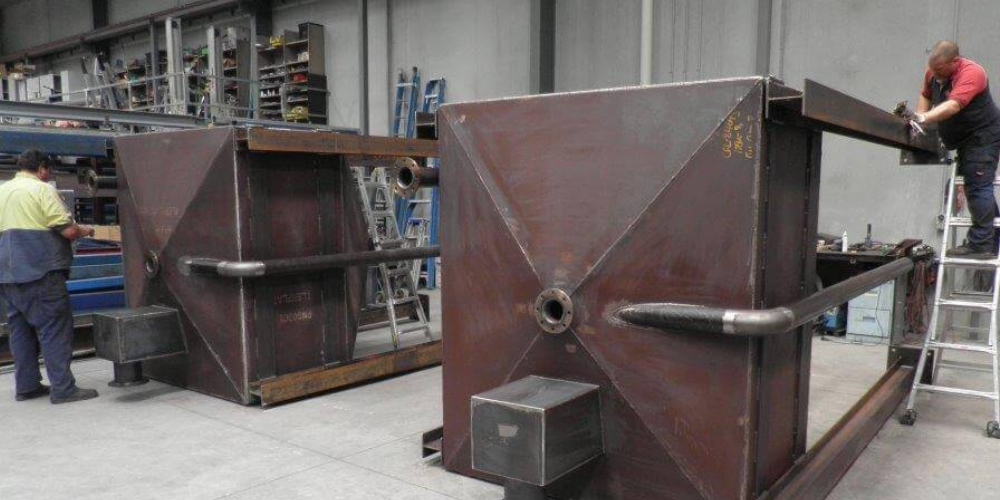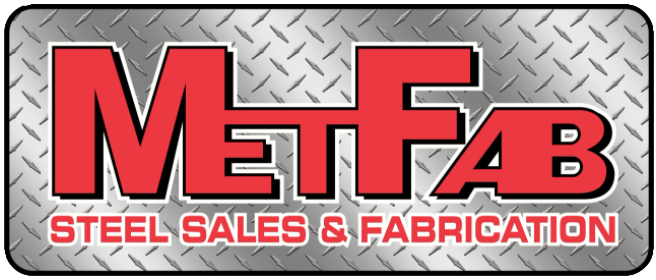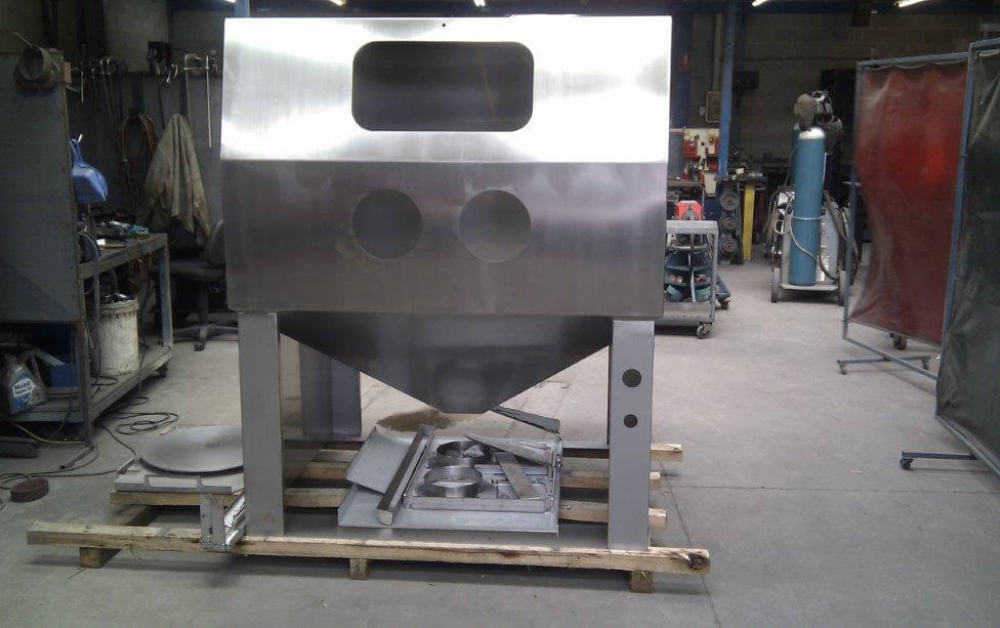How To Remove Rust on Fabricated Steel
Seeing rust on our fabricated steel has never been a good sign. It's like watching an unwanted guest slowly return home on your prized possession. The sight of rust can be downright disheartening, whether it's a beloved outdoor structure, furniture, or part of your home.
Rust is inevitable, especially here in Melbourne, where our climate throws its fair share of challenges at our steel creations. The damp air and unpredictable weather team up against us, leaving our steel vulnerable to that dreaded orange invasion.
But don't worry! We will be sharing our favourite hacks on how to get rid of rust and breathe new life into your steel treasures. We are confident about the quality of the metal works we've been doing for years but that doesn't mean we don't encounter rust problems, too!
Let's get started!
What Causes Rust on Steel?
Rust is a common problem that affects steel, causing it to rust and deteriorate. The primary cause of rust on steel is exposure to oxygen and moisture. When iron, the main component of steel, comes into contact with water and oxygen, it goes through a chemical reaction called oxidation. This reaction produces iron oxide, commonly known as rust.
Several factors can contribute to the formation of rust on steel.
Water Exposure
Water is a prerequisite for the rusting process. Rusting is more prone to occur in steel exposed to moisture from rain, snow, or other causes.
Presence of Oxygen
Another essential component in the rusting process is oxygen. Steel can rust when exposed to air with an oxygen content of about 21%.
Salt
Rusting is accelerated by salt. Steel corrosion rate increases dramatically when it comes into contact with salt, as in the case of coastal locations or roadways treated with salt in the winter to melt ice.
Acids
Steel can rust due to acid exposure, such as acid rain in industrial settings.
Humidity and Temperature
Rust can form easily in an atmosphere that is both hot and damp. Climates that are warm and humid or have erratic temperatures might hasten the rusting process.

Hacks on How to Remove Rust from Fabricated Steel
Let's dive into some tried-and-true hacks on how to kick rust to the curb and restore your fabricated steel to its former glory:
Soak in Vinegar
- Make sure that all of the corroded steel is submerged in white vinegar before handling the object.
- Soak it for a few hours, or even overnight, to give the vinegar's acid time to do its job.
- After soaking, clean away the released rust with a wire brush or steel wool.
Make a Soda Paste
- To make a thick paste, combine baking soda and water.
- Make sure to coat the rusty areas generously with the paste.
- Let it sit for half an hour or more, at the very least.
- Scrub the corroded area using a brush or an abrasive pad and thoroughly rinse it.
Power of Citric Acid
- Squeeze freshly squeezed lemon or orange juice over the rusty steel.
- Give it 15 to 30 minutes to rest so the citric acid can dissolve the rust.
- Use steel wool or a brush to scrub the rusty areas until the rust is gone.
Combination Potato and Dish Soap
- Halve a potato and submerge the sliced side in dish soap.
- Apply a layer of salt to the corroded area.
- Apply pressure to the rusty areas using the potato like a scrubber.
- After cleaning, give the steel a thorough rinse.
Coca-Cola Magic
- Pour Coca-Cola into a container and submerge the corroded item inside.
- Let it soak for many hours or perhaps overnight.
- After rinsing the steel, use a brush or aluminium foil to remove the rust.
Use a Rust Converter:
- Apply the rust converter to the rusted areas according to the product directions.
- Let it cure and react with the rust to create a stable surface that may be painted if necessary.
Sandpaper and Elbow Grease:
- To get most of the rust removed, start with coarse sandpaper.
- As you level the surface, gradually move to finer grits.
- Thoroughly clean the steel to get rid of any sanding residue.
Defence Coatings:
- Use a rust-inhibiting primer once the rust has been removed to stop further corrosion.
- To give an additional layer of protection, use a high-quality paint appropriate for steel surfaces after painting.
Tips for an Effective Quality Control With Metal Fabrication
By incorporating these preventive measures into your maintenance routine, you can significantly extend the life of fabricated steel and keep rust at bay. Remember, proactive care goes a long way in preserving the integrity and appearance of your steel possessions.
Defence Coatings
Why It Matters: Consider cleaning a revitalising spa day for your steel. Frequent cleaning removes moisture-retaining filth, dust, and other particles that could be a breeding ground for rust.
How to Do It: Use a mild soap and a soft cloth or sponge to clean the area thoroughly. Give exterior structures a periodic hose-down to add some extra shine.
Armor Up with Protective Coatings
Why It Matters: Consider these coatings your steel's equivalent of superhero capes. High-quality paints and primers that inhibit rust provide a barrier that keeps moisture and oxygen from directly contacting the surface.
How to Do It: Apply a rust-inhibiting primer before rust even considers appearing. Apply another coat of paint made especially for steel after that. It's similar to donning a sleek coat of armour for your steel!
Seal the Deal - Check for Gaps and Joints
Why it Matters: Rust enjoys cowering in cracks. Ensure you routinely check your steel structures for any joints or openings where water could seep in and cause trouble.
How to Do It: Use the proper caulk or sealants to close any gaps. This not only prevents corrosion but also improves the appearance overall.
Dry After the Rain
Why it Matters: Steel does not love dancing in the rain, even though we might love it. Rust is often attracted to areas with standing water or persistent moisture.
How to Do It: Take a towel or leave it to the sun to dry off after the rain. One preventative step against rust is ensuring your steel is dry after a rainstorm.
Consider Stainless Steel
Why It Matters: Steels differ in composition. Let me introduce you to stainless steel, a chromium-rich, rust-resistant VIP that creates a shield.
How to Do It: Whenever possible, use stainless steel, particularly in damp or difficult-to-work-in settings. Although it may cost a little more, the lifespan makes up for it.
Elevate and Separate
Why It Matters: Coming close to wet ground encourages rust. You can stop moisture from seeping into your steel buildings by raising them.
How to Do It: Use pallets or other means to hold your steel above the earth. This is especially important for posts, outdoor furniture, and other steel that touches dirt.
Inspect Like an Expert
Why It Matters: Awareness is the first step towards prevention. Frequent inspections make it easier to address rust by enabling you to detect it early on.
How to Do It: Schedule regular inspections. Look for any indications of rust, particularly where there are joints, corners, or where there has been water exposure. It is easier to cope with the sooner you catch it.
FREQUENTLY ASKED QUESTIONS
Conclusion
So there you have it. Seeing rust is annoying, but it's not the end of the story for any fabricated steel. With the tried and tested hacks we shared above, we are sure you can reclaim the beauty of your steel structures and face the rust challenge head-on.
Remember, preventive measures can always save you from the headache of rust removal in the first place. Regular inspections, protective coatings, and extra care can go a long way in preserving the integrity of your steel possessions.


